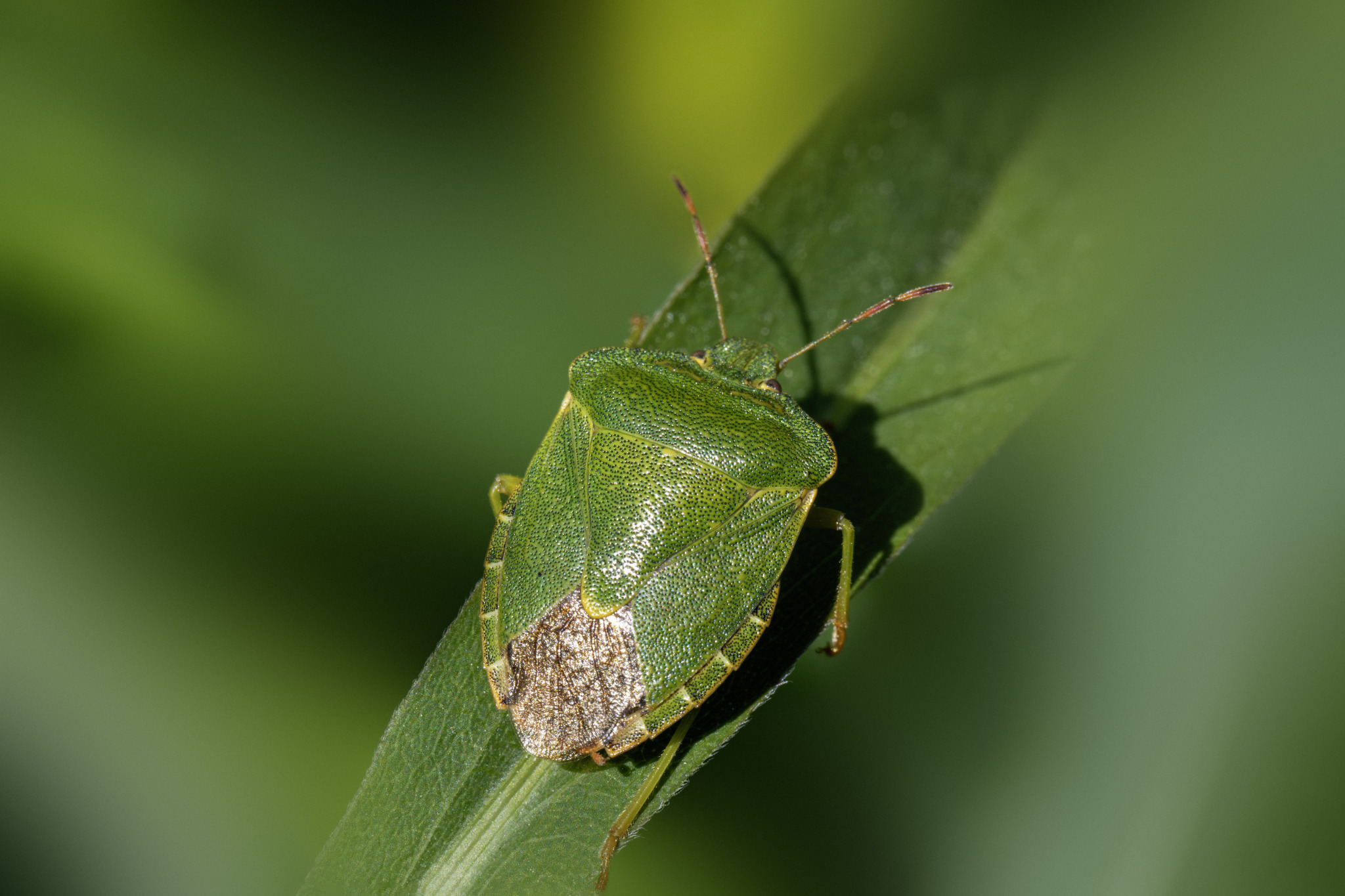The Green Shield Bug (Palomena prasina) is a common species of true bug belonging to the family Pentatomidae. Known for their distinctive shield-like shape and vibrant green color, these bugs are found throughout Europe and parts of Asia. Here are some detailed characteristics and information about the Green Shield Bug:
Appearance
- Size: Adult Green Shield Bugs are about 12 to 14 millimeters in length.
- Coloration:
- Adults: As the name suggests, adults are bright green during the spring and summer. In autumn, their color can change to a brownish-green to blend with the autumn foliage, providing camouflage.
- Nymphs: The nymphs (immature stages) are also green but often have black spots or patterns, particularly in the early instars. They gradually develop the uniform green coloration as they mature.
- Shape: They have a characteristic shield-like shape, which is typical of pentatomid bugs. Their body is broad and slightly flattened.
Habitat
- Preferred Habitats: Green Shield Bugs are versatile and can be found in various habitats, including woodlands, gardens, meadows, and agricultural fields. They prefer areas with abundant vegetation.
- Geographic Range: They are widespread across Europe and into parts of Asia. They have also been reported in North America, where they are considered an invasive species.
Behavior
- Feeding: Green Shield Bugs are primarily herbivorous and feed on plant sap. They use their piercing-sucking mouthparts to extract juices from a wide variety of plants, including fruits, vegetables, and ornamental plants.
- Overwintering: They overwinter as adults, seeking shelter in leaf litter, under bark, or in buildings. As temperatures rise in the spring, they become active again and begin feeding and breeding.
Life Cycle
- Eggs: Females lay clusters of eggs on the undersides of leaves. The eggs are barrel-shaped and pale in color.
- Nymphs: After hatching, the nymphs go through several instars (developmental stages), each progressively resembling the adult more closely. The nymphs are wingless and have more varied coloration.
- Adults: The final molt results in the fully-winged adult. Adults can be seen from late spring to autumn.
Ecological Role
- Impact on Plants: While they feed on a variety of plants, significant infestations can cause damage to crops and ornamental plants, making them a minor agricultural pest. They can cause deformities in fruits and reduce crop yields.
- Natural Predators: Green Shield Bugs have several natural predators, including birds, spiders, and parasitic wasps, which help to keep their populations in check.
Identification Tips
- Shape and Color: The shield-like shape and bright green color are key identifying features. In autumn, look for the brownish tint that helps them blend into the environment.
- Behavior: Observing their feeding habits and the characteristic damage they cause to plants can help in identification. They are often seen on the leaves and stems of a variety of plants.
Conservation Status
- Population: The Green Shield Bug is not considered endangered and is common across its range. Its populations are stable, and it is well-adapted to a variety of habitats.
- Threats: There are no significant threats to this species, though they can be impacted by habitat destruction and pesticide use.
Interesting Facts
- Chemical Defense: Like other shield bugs, the Green Shield Bug can release a foul-smelling chemical from glands located on their thorax. This serves as a defense mechanism against predators.
- Seasonal Color Change: Their ability to change color with the seasons is a fascinating adaptation that helps them avoid predation and survive in different environments.
In summary, the Green Shield Bug (Palomena prasina) is a common and adaptable true bug known for its bright green color and shield-like shape. Found throughout Europe and parts of Asia, it plays a role in both natural ecosystems and agricultural settings. While it can be a minor pest, it is also an important part of the food web, serving as prey for various predators.
Visited 77 times, 2 visit(s) today
Views: 387
Subscribe to the newsletter:
